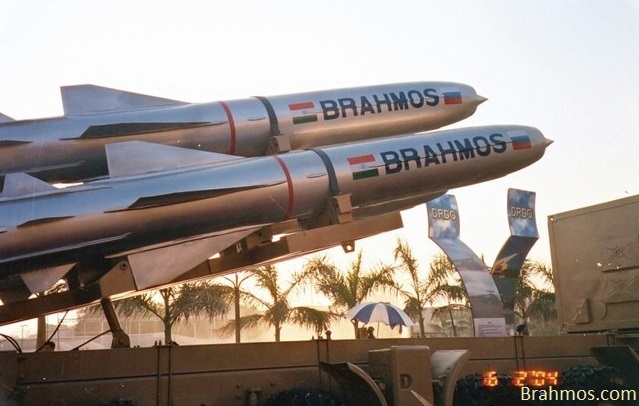
Thailand, known for its deep-rooted collaboration with China, is now shifting its focus towards building stronger relationships with other countries, particularly India. This partnership is entering a new era, driven by the appeal of India’s fastest cruise missile, BrahMos, which is currently deployed across all three divisions of the Indian military.
BrahMos Aerospace, having reached a significant milestone with their advanced supersonic cruise missile being positioned near China through the Philippines, has initiated talks with several potential clients, including Thailand. These discussions have been ongoing for a significant duration.
On November 6, comprehensive data about the missile system was presented to the Thai Defense Minister, Sutin Klungsang. At the opening day of Defense Security 2023 at the IMPACT Exhibition Center in Bangkok, Praveen Pathak, the Director of Market Promotion and Export, briefed a high-level delegation led by Minister Klungsang on the latest developments within the BrahMos weapon complex and the BrahMos Pavilion.
Minister Klungsang’s high praise for the weapon complex’s capabilities and his interest in the BrahMos missile system were acknowledged by BrahMos’ handle on X.
While Thailand had expressed interest in the missile system earlier, the pace of negotiations accelerated following the visit of Royal Thai Navy Chief Admiral Ruddit to India in December 2018. These discussions are still ongoing.
Thailand, valued by China partly for its strategic location near Bangkok that offers direct access to the Gulf of Thailand and subsequently to the South China Sea, is quickly becoming a hub of modernization in Southeast Asia.
The recently established civilian coalition government in Thailand may enhance its engagement with Western democracies while maintaining the existing ties with China, established by the previous military-led government.
While the current civilian government in Thailand may not completely cut off ties with China, there is a clear inclination towards diversifying its alliances with other nations. As a result, India will need to devise an effective strategy to successfully finalize the deal with Thailand.
The Philippines
The Philippine government’s acquisition of the BrahMos coastal defense missile systems from India, equipped with missiles capable of carrying 200 kg semi-armor-piercing warheads, has been confirmed by the State Information Agency of the Philippines (PNA).
The Philippine government has procured two BrahMos batteries, which will function as a combined artillery unit and will be actively engaged in Coast Guard operations. The Philippine Army (PA) spokesperson, Col. Xerxes Trinidad, explained that this purchase is part of the local RAFPMP initiative’s 3rd horizon. Currently, the Philippine Army is implementing the initiative’s 2nd horizon, indicating that Manila will acquire the two batteries in the coming years.
The ground version of the BrahMos missile, purchased by the Philippines, operates on a sequential two-stage propulsion system. The first system, powered by liquid fuel, launches the missile, while the second system propels the missile further using a ramjet also fueled by liquid. Military experts have analyzed that this propulsion format allows the range of the BrahMos to be extended. Moreover, the two-stage propulsion and the type of fuel used are a more cost-effective alternative to traditional rocket fuel.
It’s worth noting that the Philippines’ decision to acquire the BrahMos was made by the government in 2019, long before the negotiations with India began. Unconfirmed data suggests that a credit line of $100 million was offered to the Philippines by New Delhi to initiate the production process. Since then, the Philippines has been considering the feasibility of purchasing the two batteries in two stages without relying on the credit line from India.
While the deal is estimated to be worth around $375 million, the exact payment method that the Philippines will use for both BrahMos systems is still uncertain.
The BrahMos missile is engineered to target surface entities, with the capability to fly at a minimum altitude of five meters and ascend up to 15,000 meters. The missile is substantial in size, with a diameter of 70cm and a wingspan of 1.7m.
It can achieve speeds of up to Mach 3.5, with a maximum range of 650 km. Both the maritime and land versions can carry a 200 kg warhead, while the airborne variant, referred to as BrahMos A, has a capacity for a 300 kg warhead. The propulsion system is two-staged, using a solid-propellant rocket for initial acceleration, followed by a liquid-fuelled ramjet for sustained supersonic cruise.
The implementation of air-breathing ramjet propulsion results in efficient fuel usage, giving the BrahMos a greater range compared to a missile powered solely by rocket propulsion.
When juxtaposed with lighter subsonic cruise missiles like the Tomahawk, the high-speed functionality of the BrahMos provides superior target-penetration capability. Despite having half the payload and a fraction of the range of the Tomahawk, the BrahMos, being twice as heavy and nearly four times faster, possesses over 32 times the kinetic energy during cruise. This suggests that the missile was designed for a specific tactical role.
With its Mach 2.8 speed, interception by certain missile defense systems is unfeasible; coupled with its precision, it makes the BrahMos missile a significant threat to maritime targets.
Originally designed as an anti-ship missile, the BrahMos Block III can also be deployed against land-based targets. It offers flexibility in launch positions, allowing for both vertical and inclined positioning. Its 360-degree target coverage further enhances its capabilities.
All versions of the BrahMos missile – land, sea, and subterranean – have a virtually identical configuration. Additional tail fins and a reduced booster are features unique to the airborne variant for added stability during lift-off.
The current configuration of the BrahMos supports aerial deployment, with the Su-30MKI being the selected carrier. The BrahMos missile set a record on 5 September 2010 as the first supersonic to perform a steep dive. The missile utilizes a “fire-and-forget” system, eliminating the need for operator intervention post-launch




